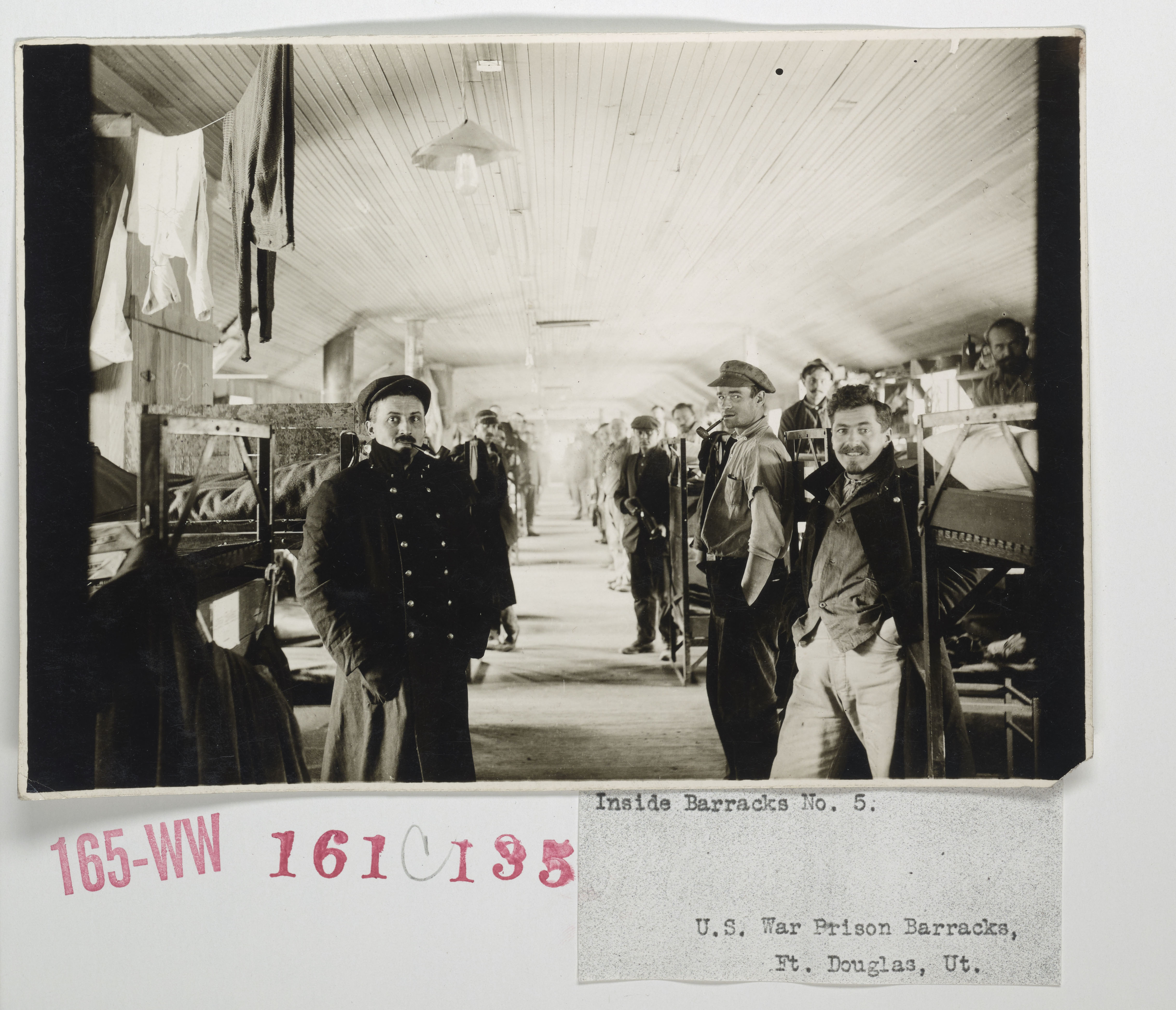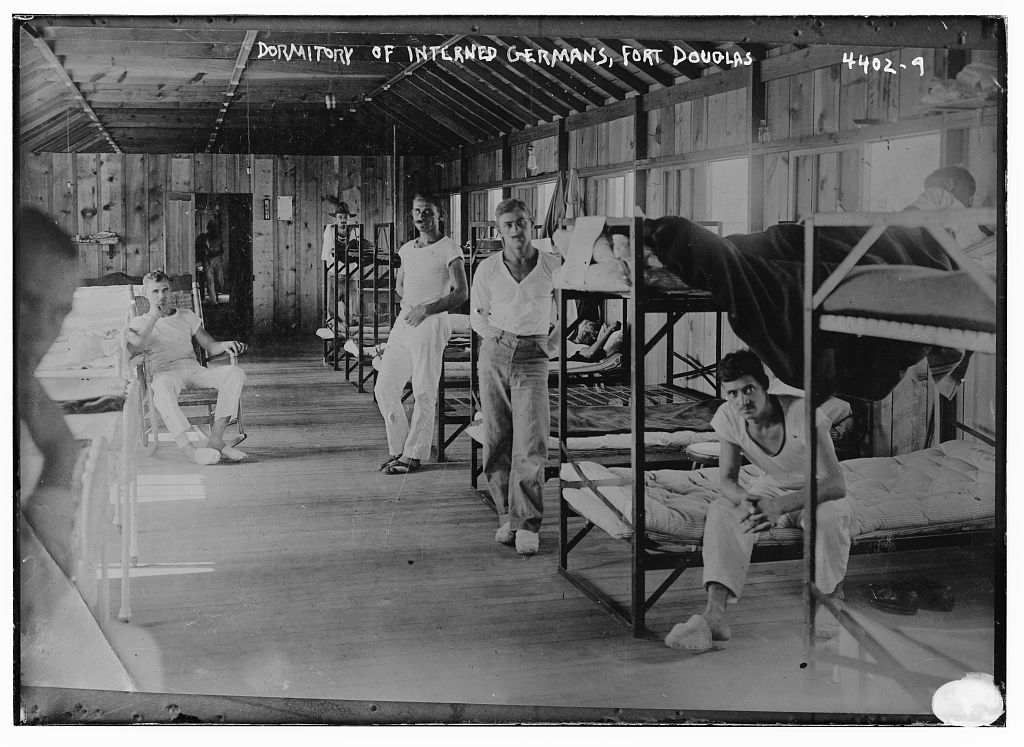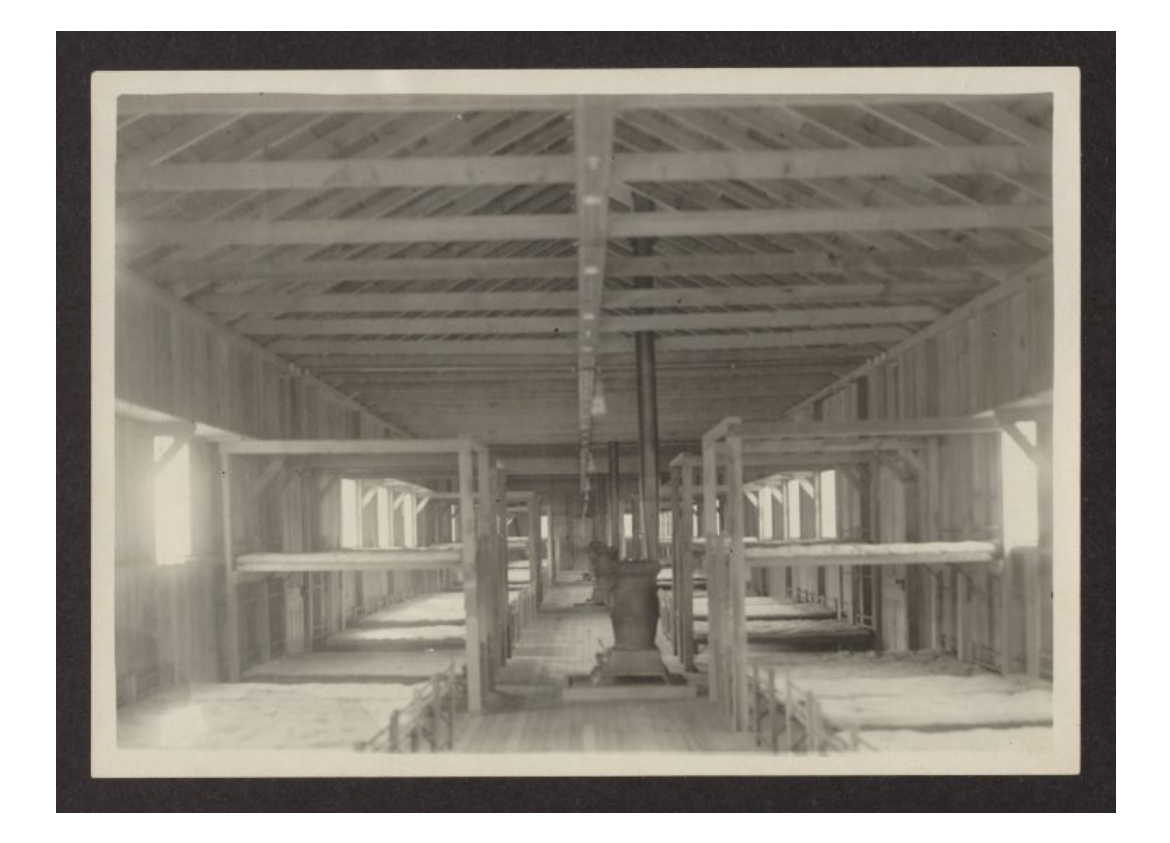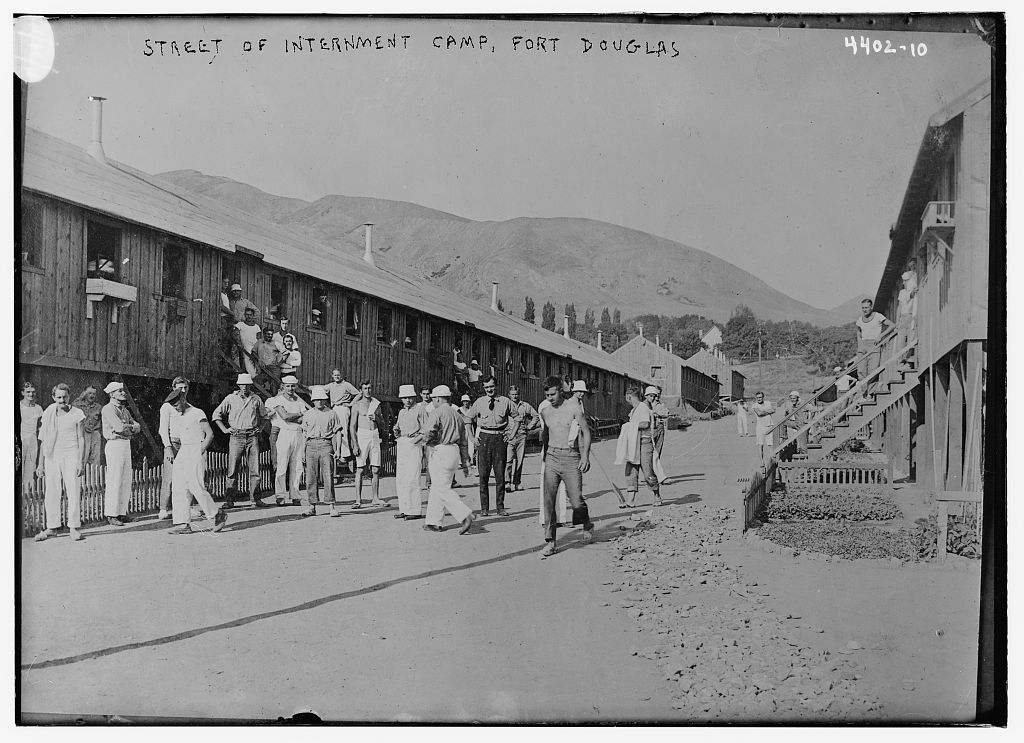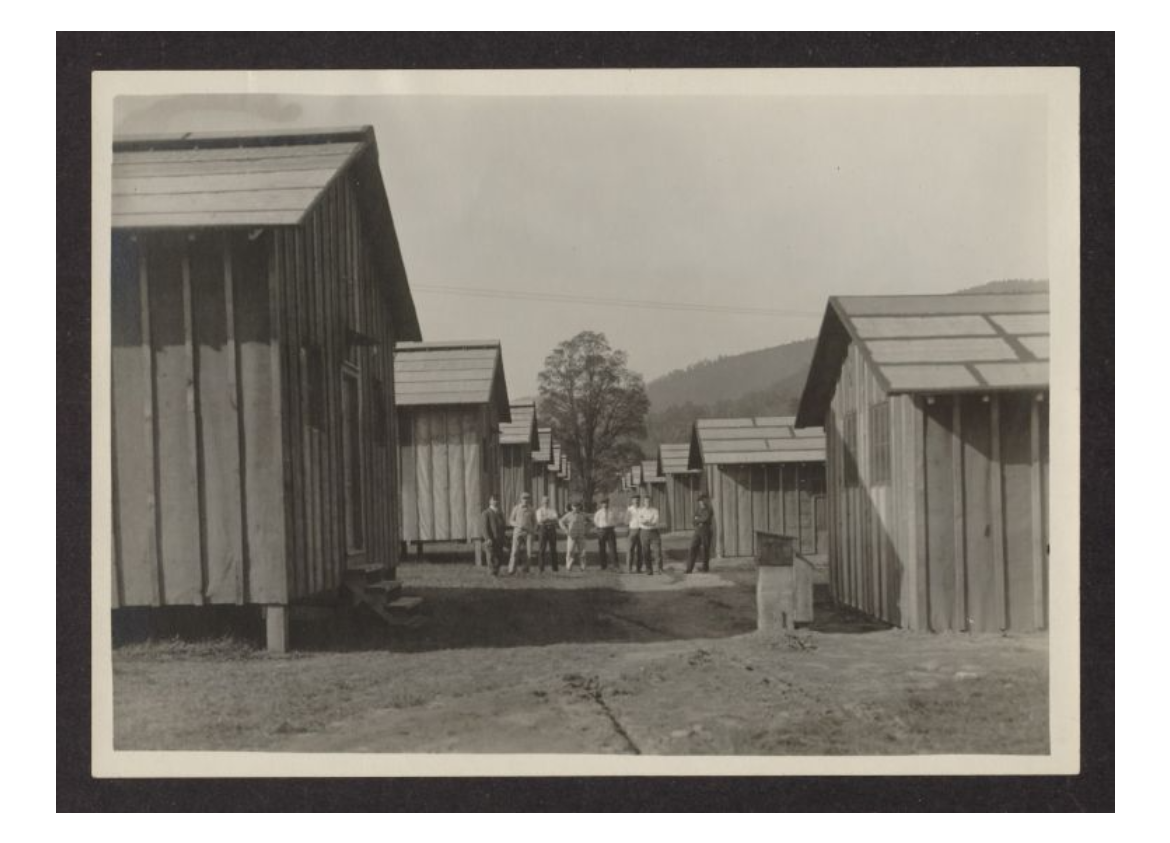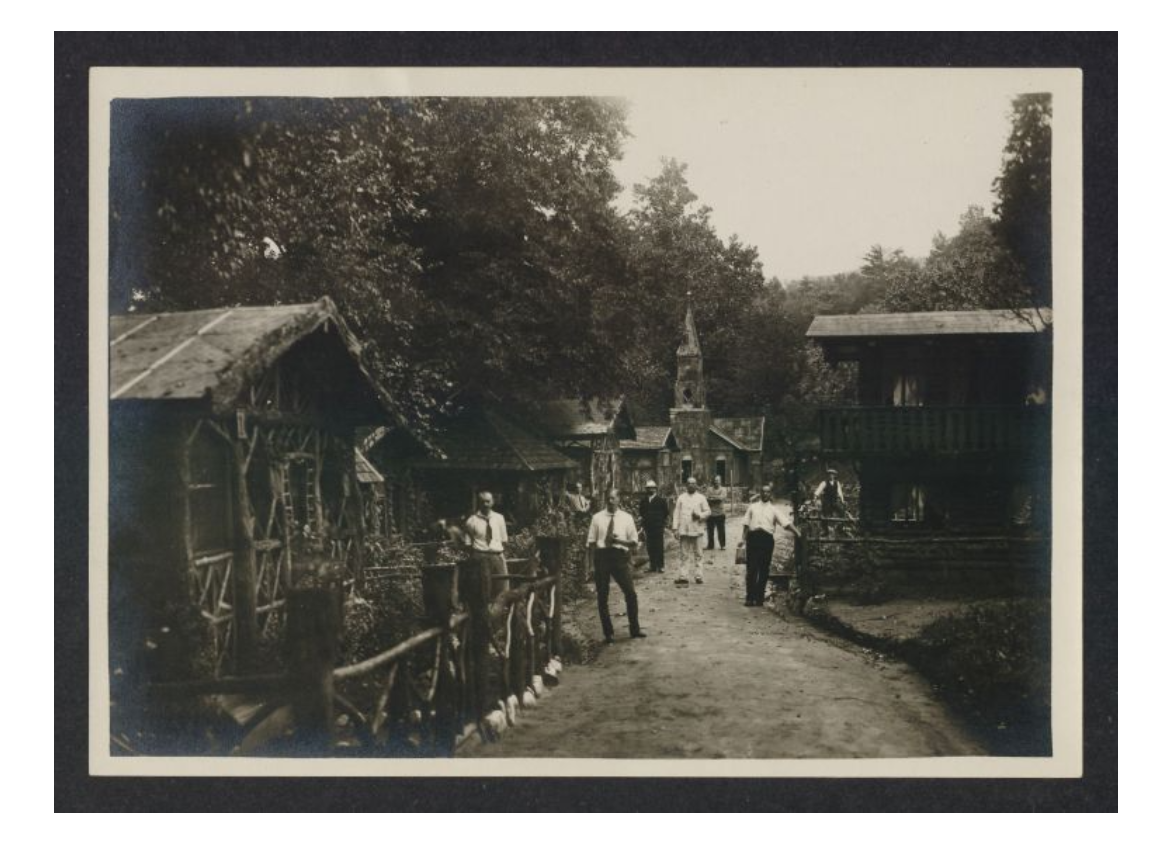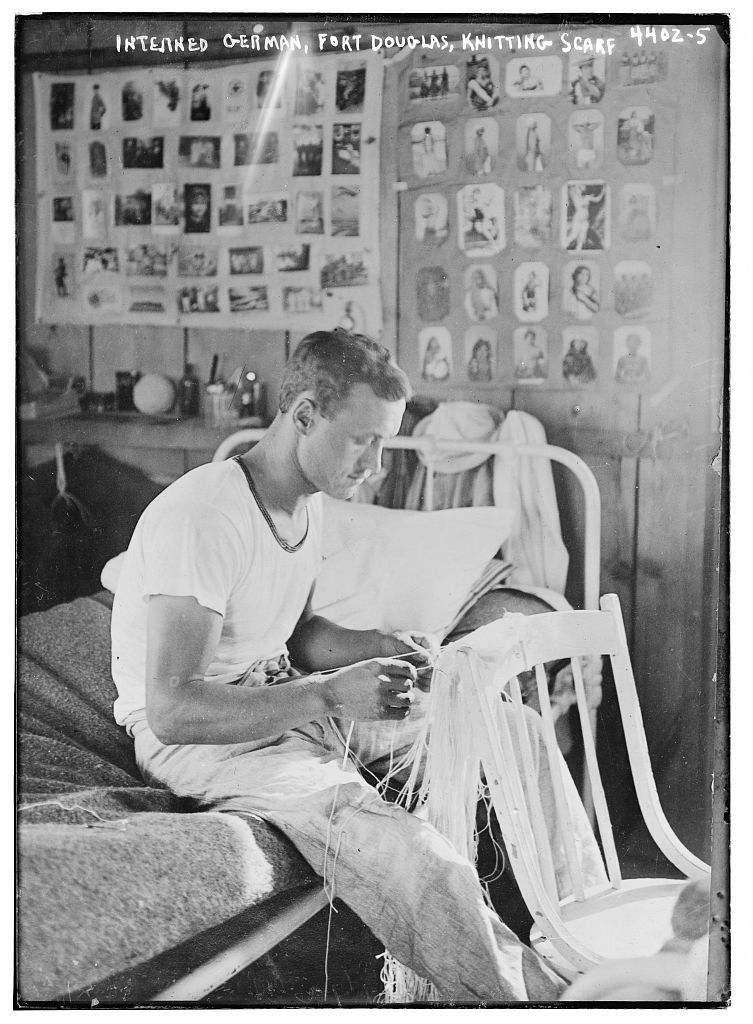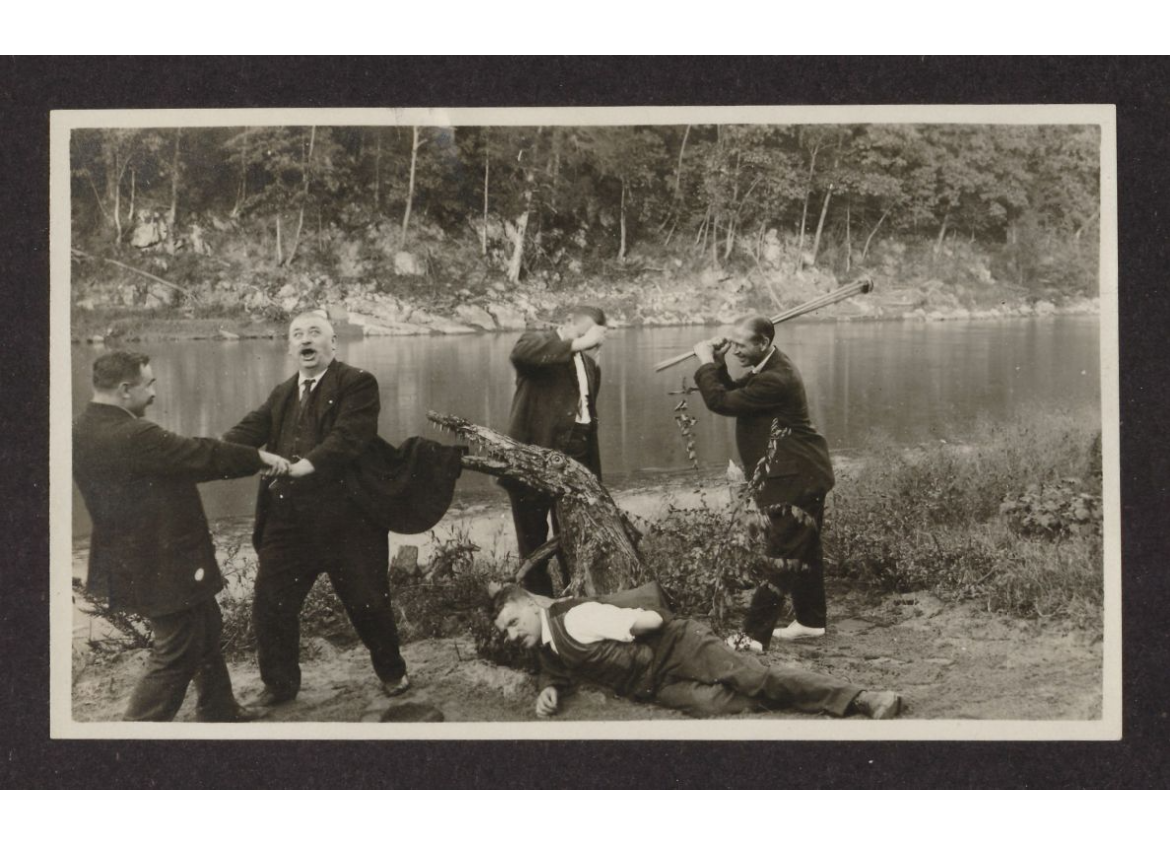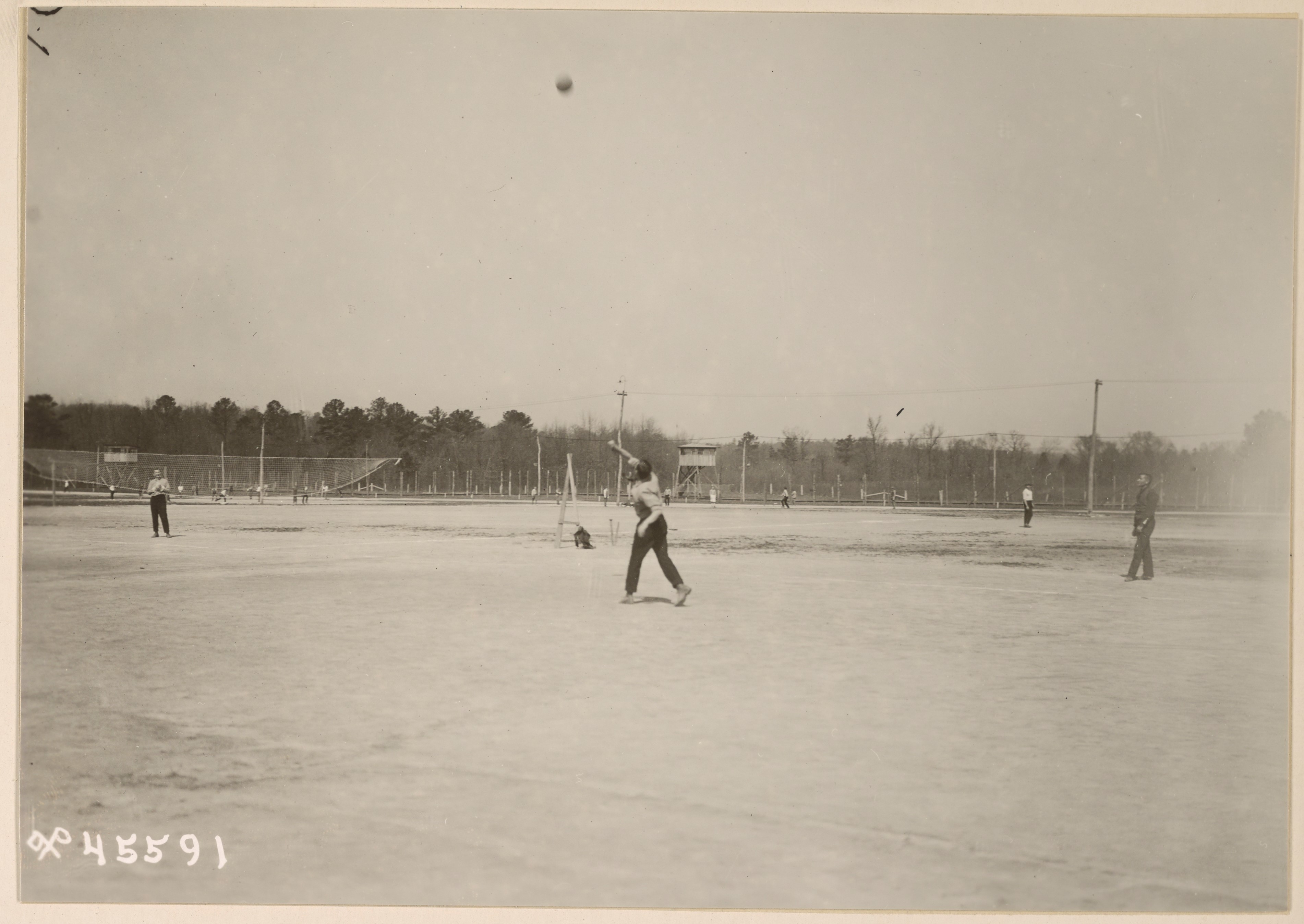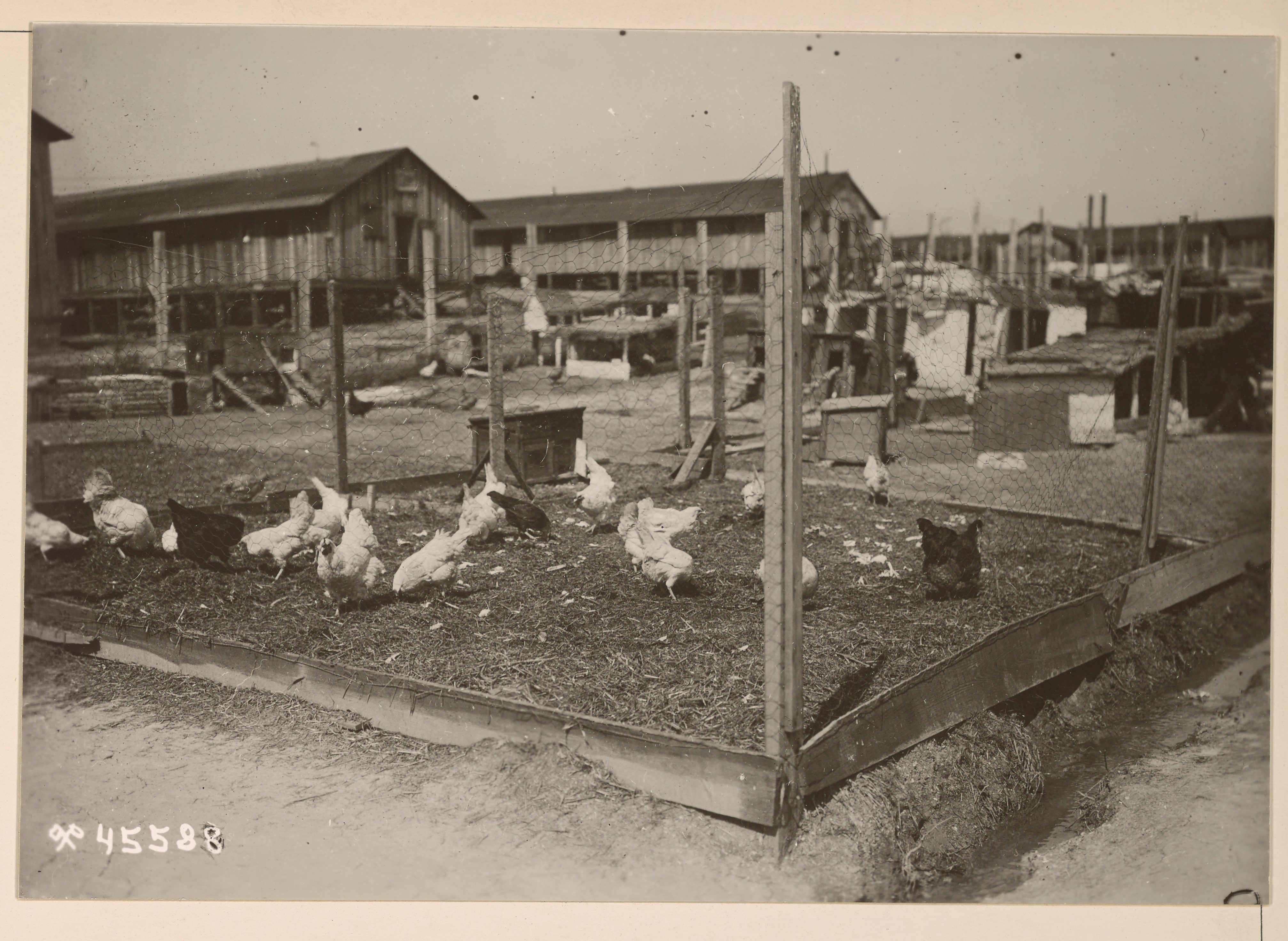This album was created by a member of the TPS Teachers Network, a professional social media network for educators, funded by a grant from the Library of Congress. For more information, visit tpsteachersnetwork.org.
Enemy Aliens: America's German Internment Camps, WWI
Album Description
 6 - 8
6 - 8  9 - 12
9 - 12  Social Studies/History
Social Studies/History  Internment Camps WWI
Internment Camps WWI  World War I
World War I  The Great War
The Great War  Internment Camps
Internment Camps
Did you know that during World War I, thousands of Germans and German Americans were interned in camps across the United States? From 1917 to 1920, they were held in Hot Springs, North Carolina; Fort Oglethorpe, Georgia; and Fort Douglas, Utah—yet their stories have been largely forgotten. Even after years of teaching American history, I had never heard of these internment camps—until one of my brightest students brought them to my attention. That single moment sparked my deep dive into this hidden chapter of history. Some of these camps also held German POWs, though Fort Oglethorpe functioned solely as an internment facility. This album brings together a wealth of primary and secondary resources from the Library of Congress, the National Archives, and the North Carolina State Archives, shedding light on a past that deserves to be remembered.
US War Prison Barracks, Ft. Douglas, Utah.jpg
Teaching Notes
This is a photograph of German internees in the barracks at Fort Douglas, Utah. Considering their attire and facial expressions, I assume they have just arrived at the camp.
Using this photograph with the "Zoom In, Zoom Out" strategy would encourage close observation. With this strategy, the photograph is cropped into 3 or 4 sections with students responding to what they see in each section prior to viewing the entire picture. The item description at the bottom of the photograph could be the final "reveal" when using this strategy. Teachers could ask guiding questions with each section or allow the students to note their observations. This could be with the whole class or as a group activity with each group getting a section of the photograph.
The Library of Congress provides an excellent analysis tool and teachers' guides for primary sources that provide guiding questions:
https://www.loc.gov/programs/teachers/getting-started-with-primary-sources/guides/
This photograph could also be compared with the next picture in this album showing internees in the barracks in Fort Douglas. For example, students could debate which photograph they believe was taken first, including the differences in attire and in facial expressions.
Dormitory of interned Germans, Fort Douglas, Utah
Teaching Notes
This photograph of internees at Fort Douglas, Utah could be compared with the first picture in this album, which also shows internees in the barracks in Fort Douglas. For example, students could debate which photograph they believe was taken first, by examining the differences in attire and facial expressions.
Teachers could use the Library of Congress analysis tool and teachers' guides for primary sources to provide guiding questions:
https://www.loc.gov/programs/teachers/getting-started-with-primary-sources/guides/
Another idea is to use the attached Padlet containing this photograph and five others from this album. Students using the Padlet would examine all six photographs and choose two to analyze, commenting on each two.
https://padlet.com/napierl2/sharing-your-ideas-nkezr0xicf4st5rh
Reference link: http://www.loc.gov/resource/ggbain.25703/
Reference note
Created / Published
- [between ca. 1915 and ca. 1920]
Genre
- Glass negatives
Notes
- - Title from data provided by the Bain News Service on the negative.
- - Forms part of: George Grantham Bain Collection (Library of Congress).
- - General information about the George Grantham Bain Collection is available at http://hdl.loc.gov/loc.pnp/pp.ggbain
Repository
- Library of Congress Prints and Photographs Division Washington, D.C. 20540 USA http://hdl.loc.gov/loc.pnp/pp.print
Digital Id
- ggbain 25703 //hdl.loc.gov/loc.pnp/ggbain.25703
Barracks of German Internment Camp, Hot Springs, NC 1918.png
Teaching Notes
Adolph Thierbach, an internee at the Hot Springs, North Carolina camp, took this photo. His album, linked here, documented his stay. https://www.ibiblio.org/ww1gd/Index.html
I have downloaded and included several of the photographs in my album. More of Adolph's pictures are available for viewing and downloading in the North Carolina State Archives digital collections. https://digital.ncdcr.gov/Documents/Detail/united-states-german-internment-camp-hot-springs-nc/563375
Following the students' observations of the photographs of the barracks showing the interned Germans located at Fort Douglas, they could discuss why they believe this picture of the empty barracks at Hot Springs, North Carolina was taken.
Guiding questions: How does this photograph compare with the pictures of the Fort Douglas, Utah barracks? Why might an internee photograph the barracks?
The Library of Congress's observation tool and teachers' guides include more guiding questions.: https://www.loc.gov/programs/teachers/getting-started-with-primary-sources/guides/
Reference link: https://digital.ncdcr.gov/documents?returning=true
Reference note
Empty barracks located in Hot Springs, North Carolina internment camp. The interned Germans built the barracks.
https://www.ibiblio.org/ww1gd/Inside_Another_Barracks_G0034.html
Street of German Internment Camp, Fort Douglas, Utah
Teaching Notes
This photograph of the street of the barracks in Fort Douglas, Utah, could be paired with the picture of the street of the barracks from Hot Springs, North Carolina. Students could discuss the similarities. If the students do not know the purpose of barracks, the teacher could explain this.
The Library of Congress's Observation Tool and Teachers' Guides include more guiding questions.: https://www.loc.gov/programs/teachers/getting-started-with-primary-sources/guides/
The teachers could also pair the pictures of these barracks with those of Japanese American internment barracks. Teachers could explain the Alien Enemies Act of 1789 and how it allows for the internment of individuals deemed enemies during wartime by Executive Order.
Teachers could also discuss why students believe fewer German Americans were interned during WWI than Japanese Americans during WWII. Why have the German camps been largely forgotten?
Reference link: http://www.loc.gov/resource/ggbain.25704/
Reference note
Created / Published
- [between ca. 1915 and ca. 1920]
Genre
- Glass negatives
Notes
- - Title from unverified data provided by the Bain News Service on the negatives or caption cards.
- - Forms part of: George Grantham Bain Collection (Library of Congress).
- - General information about the George Grantham Bain Collection is available at http://hdl.loc.gov/loc.pnp/pp.ggbain
Repository
- Library of Congress Prints and Photographs Division Washington, D.C. 20540 USA http://hdl.loc.gov/loc.pnp/pp.print
Digital Id
- ggbain 25704 //hdl.loc.gov/loc.pnp/ggbain.25704
Group of Germans and Barracks in Camp B They Helped Build, Hot Springs, NC 1917.png
Teaching Notes
This photograph of the street of the barracks in Hot Springs, North Carolina, could be paired with the picture of the street of the barracks from Fort Douglas, Utah. Students could discuss the similarities and differences. North Carolina, WWI If the students do not know the purpose of barracks, the teacher could explain this.
The Library of Congress's Observation Tool and Teachers' Guides include more guiding questions.: https://www.loc.gov/programs/teachers/getting-started-with-primary-sources/guides/
The teachers could also pair the pictures of these barracks with those of Japanese American internment barracks. Teachers could explain the Alien Enemies Act of 1789 and how it allows for the internment of individuals deemed enemies during wartime by Executive Order.
Teachers could also discuss why students believe fewer German Americans were interned during WWI than Japanese Americans during WWII. Why have the German camps been largely forgotten?
Reference link: https://www.ibiblio.org/ww1gd/Barracks_In_Camp_B_G0033.html
Reference note
https://www.ibiblio.org/ww1gd/Barracks_In_Camp_B_G0033.html
Barracks in Camp B, Hot Springs, North Carolina
Interned Germans on Street of Village They Constructed, Hot Springs, NC 1917.png
Teaching Notes
Adolph Thierbach, an internee at the Hot Springs, North Carolina camp, took this photo. His album, linked here, documented his stay. https://www.ibiblio.org/ww1gd/Index.html
I have downloaded and included several of the photographs in my album. More of Adolph's pictures are available for viewing and downloading in the North Carolina State Archives digital collections. https://digital.ncdcr.gov/Documents/Detail/united-states-german-internment-camp-hot-springs-nc/563375
About the picture: The internees built a German Village from scraps of wood on the grounds of the camp. A street in the village is pictured along with some internees who built it. More information on the village and the camp is available here: https://visitmadisoncounty.com/ww1-internment-camp-hot-springs/
Teachers could use Thierbach's album as a stand-alone lesson on German internment or contrast his photographs with those of the Fort Oglethorpe and Fort Douglas camps, noting similarities and differences.
Another teaching idea is to use the attached Padlet containing this photograph and five others from my album. Students using the Padlet would examine all six photographs and choose two to analyze, commenting on each two.
https://padlet.com/napierl2/sharing-your-ideas-nkezr0xicf4st5rh
Reference link: https://digital.ncdcr.gov/Documents/Detail/united-states-german-internment-camp-hot-springs-nc/563375
Reference note
View of a village street with a completed church in the background and German prisoners stopping their work to pose for the photograph. This street scene is from within the German internment camp village in Hot Springs, N.C. (1917) [Photograph by: Adolph Thierbach, Hot Springs, N.C.] [originally numbered #5]
Interned German knitting scarf, Fort Douglas, Utah
Teaching Notes
This photograph of an interned German knitting a scarf in the Fort Douglas, Utah barracks lends itself to close observation and questioning. With the top descriptor cropped off, students may wonder what this man is doing. Other guiding questions: what type of building does he appear to be in? Why are pictures tacked on the wall? Do you think this photograph was taken in America? During what period of history?
For more guiding questions, teachers could use the Library of Congress's Observation Tool and Teacher's Guide for Analyzing Primary Sources or Analyzing Photographs and Prints. Link attached here:
https://www.loc.gov/programs/teachers/getting-started-with-primary-sources/guides/
Another teaching idea is to use the attached Padlet containing this photograph and five others from my album. Students using the Padlet would examine all six photographs and choose two to analyze, commenting on each two.
https://padlet.com/napierl2/sharing-your-ideas-nkezr0xicf4st5rh
Reference link: http://www.loc.gov/resource/ggbain.25700/
Reference note
Created / Published
- [between ca. 1915 and ca. 1920]
Genre
- Glass negatives
Notes
- - Title from data provided by the Bain News Service on the negative.
- - Forms part of: George Grantham Bain Collection (Library of Congress).
- - General information about the George Grantham Bain Collection is available at http://hdl.loc.gov/loc.pnp/pp.ggbain
Repository
- Library of Congress Prints and Photographs Division Washington, D.C. 20540 USA http://hdl.loc.gov/loc.pnp/pp.print
Digital Id
- ggbain 25700 //hdl.loc.gov/loc.pnp/ggbain.25700
Germans Interned at Hot Springs, NC Staging Imaginative Alligator Attack.png
Teaching Notes
Adolph Thierbach, an internee at the Hot Springs, North Carolina camp, took this photo. His album, linked here, documented his stay. https://www.ibiblio.org/ww1gd/Index.html
I have downloaded and included several of his photographs in my album. More of Adolph's pictures, including this one, are available for viewing and downloading in the North Carolina State Archives digital collections. https://digital.ncdcr.gov/Documents/Detail/united-states-german-internment-camp-hot-springs-nc/563375
More information on the village and the camp is available here: https://visitmadisoncounty.com/ww1-internment-camp-hot-springs/
Teachers could use Thierbach's album as a stand-alone lesson on German internment or contrast his photographs with those of the Fort Oglethorpe and Fort Douglas camps, noting similarities and differences.
Another teaching idea is to use the attached Padlet containing this photograph and five others from my album. Students using the Padlet would examine all six photographs and choose two to analyze, commenting on each two.
https://padlet.com/napierl2/sharing-your-ideas-nkezr0xicf4st5rh
This photograph from the internment camp at Hot Springs, North Carolina could serve as a good "jumping off" point to discuss how detainees spent their "free time" while interned. From my research, I gather that Hot Springs was the most hospitable of the camps.
The close-up photograph of the carved alligator is here: https://www.ibiblio.org/ww1gd/Alligator_G0056.html
Reference link: https://digital.ncdcr.gov/Documents/Detail/united-states-german-internment-camp-hot-springs-nc/565209
Reference note
Photograph of five German prisoners, wearing suits, playfully staging fighting off an attack by a fake alligator another German prisoner had carved from a tree stump along the French Broad River in Hot Springs, N.C. The German prisoners were interned at the nearby German internment camp in the town. On the back of the photograph is written “O. Seaman, called Papa Seaman” (1917) [Photograph by: Adolph Thierbach, Hot Springs, N.C.]
Prisoners Playing Volleyball Ft. Oglethorpe, Georgia.jpg
Teaching Notes
This photograph from the internment camp at Fort Oglethorpe, Georgia could be paired with the photograph of the staged alligator attack at Hot Springs, North Carolina to discuss how detainees spent their "free time" while interned.
Another photograph in this collection from the National Archives states that volleyball was the German prisoners' chief sport.
I have cropped this photograph, but the original from the National Archives Digital Collection notes that it was taken on May 3, 1919, well after the cease-fire in October 1918.
The link to Fort Oglethorpe photographs is here: https://catalog.archives.gov/search?dataSource=description&page=1&q=%22Fort%20Oglethorpe%22%20%22war%20prison%22&typeOfMaterials=Photographs%20and%20other%20Graphic%20Materials
Reference link: https://catalog.archives.gov/id/86697384
War Prison Barracks Section of Poultry Yard Ft. Oglethorpe, Georgia.jpg
Teaching Notes
This photograph from the National Archives Digital Collection shows a poultry yard behind the Fort Oglethorpe, Georgia, prison camp barracks. A notation beside the photograph states that wealthy prisoners "owned their own" poultry yards, indicating that detainees could retain at least a portion of their wealth while in the camps.
A teaching idea is to use the attached Padlet containing this photograph and five others from my album. Students using the Padlet would examine all six photographs and choose two to analyze, commenting on each two.
https://padlet.com/napierl2/sharing-your-ideas-nkezr0xicf4st5rh
Teachers could also pair this picture with others from Hot Springs, North Carolina and Fort Douglas, Utah to discuss the differences between the barracks at each camp.
The link for the Ft. Oglethorpe photographs is here:
Reference link: https://catalog.archives.gov/id/86697378
Reference note
https://catalog.archives.gov/id/86697366
Loyalty
Teaching Notes
In November 1917, James Watson Gerard, American Ambassador to Germany from 1913-1917, stated, "Every citizen must declare himself American -- or traitor!" when giving a speech to the Ladies Aid Society of St. Mary's Hospital in New York, calling for all German Americans to be loyal to the United States during the war.
At the time, Germans constituted the largest immigrant group in the United States, and German was the most widely taught foreign language until the U.S. entered World War I.
When discussing America's entry into WWI and subsequent German persecution, teachers could use this recording as a quick "bellringer" activity by instructing each student to respond to the quote, "Every citizen must declare himself American--or traitor!" either individually in their notebooks or through discussion with a classmate. The teacher could then play the "Loyalty" recording and have students analyze its message. This lesson introduction could work well when teaching about German internment as well as the Espionage and Sedition Acts.
If the teacher has time for a "deeper dive" into the source, the Library of Congress provides a student Primary Source Analysis Tool and a Teacher's Guide to Analyzing Sound Recordings, linked here: https://www.loc.gov/programs/teachers/getting-started-with-primary-sources/guides/
Reference link: https://www.loc.gov/item/2004650681/
Reference note
Summary: Speech given by Ambassador James Watson Gerard as warning to German Americans, "Every citizen must declare himself American -- or traitor!"
Created / Published: New York : Made by the Columbia Graphophone Co., c1918.
Genre: Alternate takes (Sound recordings)
Notes: - Nation's Forum: 77666 (matrix). - James Watson Gerard, speaker; Guy Golterman, director. - Recorded Feb. 7, 1918, New York, N.Y. - Take 1. - Sound quality: good. - Issued with: From the battlefields of France, Nation's Forum 69333. - Rigler and Deutsch index, DLC 182/1163 - Goldenberg, D. "Nation's Forum : a history and discography," The Discographer, v. 2, n. 4 - Source used: M/B/RS Recorded Sound Section Subjects files; discographical sources. - Production level cataloging.
Digital Id: http://hdl.loc.gov/loc.mbrsrs/nforum.9000002
Tenderness for Enemy Aliens: Opinion Article from the New York Tribune, April 20, 1918
Teaching Notes
Teachers working with more advanced students or those with additional time could use this opinion piece from The New York Tribune, April 20, 1918. An excerpt from the article could also be used in a "gallery walk" which includes other sources from this album. I have provided a transcript of the article, which could easily be condensed.
The following is a notable quote from the end of the article: "Let us have a nation-wide clean-.up. Let us fill our internment camps up with Germans and turn all Americans who are working for German victory over to the military courts."
At the time, Germans constituted the largest immigrant group in the United States, and German was the most widely taught foreign language until the U.S. entered World War I.
The link to the Library of Congress's Student Primary Source Analysis Tool and the Teacher's Guide to Analyzing Newspapers is here: https://www.loc.gov/programs/teachers/getting-started-with-primary-sources/guides/
Transcript of "Tenderness for Enemy Aliens" from New York Tribune.pdf
Photographs taken by internee Adolph Thierbach, German Internment Camp, Hot Springs, NC, 1917
Teaching Notes
To access the Hot Springs camp photograph album with the photographer's descriptions of each picture, search for "Thierbach, Adolph." He was the photographer and a detainee in the camp.
Two photographs in the Padlet (link below) were taken from his collection.
https://padlet.com/napierl2/sharing-your-ideas-nkezr0xicf4st5rh
If students are interested in the topic, the following links are excellent resources. From my research, I gather Hot Springs was the most hospitable of the three camps in my album. Some Hot Springs internees were later transferred to Fort Oglethorpe, Georgia.
https://visitmadisoncounty.com/ww1-internment-camp-hot-springs/
Photographs from National Archives of German POWs and German interned citizens at Fort Oglethorpe, Georgia, May 1919
Internment of Enemy Aliens during WWI, National Archives
Teaching Notes
This article by Claire Prechtel-Kluskens, a senior and projects archivist at National Archives and Records Administration, was published by the National Archives in their NGS Quarterly, April—June 2017, Volume 43, Number 2.
I found it a valuable research tool. The PDF has links to additional National Archives' digital sources on German Internment Camps, including photographs of German women registering as enemy aliens.
Incarceration at Fort Oglethorpe during World War I
Teaching Notes
States of Incarceration website source: Incarceration at Fort Oglethorpe during World War I, providing a glimpse into life at the camp.
The War Department: Keeper of Our Nation's Enemy Aliens During World War I
Teaching Notes
A secondary research source.
"The War Department: Keeper of Our Nation's Enemy Aliens During World War I": a scholarly address given by Mitchell Yockelson to the Society for Military History Annual Meeting, April 1998.
© Mitchell Yockelson, 1998

